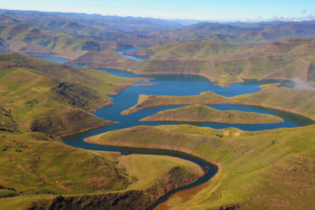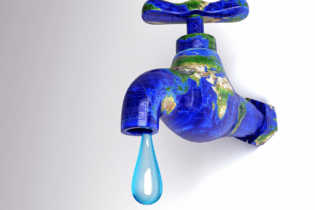The 100-year-old Umzonyana Water Treatment Works is to be refurbished in a R50 million upgrade project, which will increase its treatment capacity by 30 Mℓ/d – from 120 to 150 Mℓ/d, according to Royal HaskoningDHV, the consultants appointed for the project by the Buffalo City Metropolitan Municipality.
“The Umzonyana Water Treatment Works (UWTW) was built in the early 1900s as the main water supply to the borough of East London and has been progressively enlarged from the initial small, slow sand filtration plant to the existing sophisticated treatment works with an output of 120 Mℓ/d of purified water,” explains project manager Victor Helberg. The aim of the project is to meet the increased drinking water demand caused by new developments and the increasing number of households in Buffalo City Metropolitan Municipality (BCMM) area. This project will ensure that the required volumes of clean water for BCMM’s communities could be provided at the lowest possible cost thus enabling the municipality to fulfil its mandate of being the Water Services Authority (WSA) and provider (WSP) to its constituents. This upgrade, which is calculated to meet the anticipated water demands for the next 15 years, will involve the designs and implementation for additional sedimentation tanks, sludge ponds, upgrading of the Mdantsane pump station Number 2, new chlorination and ammonia plants as well as the completion of the new inlet works. “The project is especially challenging as portions of previous upgrade work were designed by other consultants and construction of certain works has been started but not completed,” saysHelberg. “Part of our remit is to investigate and incorporate those portions of works into the new upgrade to ensure their effective and beneficial use,” he says. Sedimentation tanks There are six sedimentation tanks with varying capacity from 9.7 to 43.8 Mℓ/d. To increase treatment capacity, as well as improve final waterquality, additional sedimentation processing is required. Sludge lagoons/ponds Currently, there are three sludge lagoons built in rocky outcrops situated above in the north part of the Umzonyana Dam, where supernatant is drained back into the dam. Sludge lagoons fill up quickly, hence construction of additional capacity nearby is needed, including appropriate fencing around new and existing lagoons. Upgrading of the Mdantsane Pump Station Number 2This pump station comprises two pump sets, and the new works will include installation of a reflux valve on a 525 mm AC rising main, upgrading of pump motors with new switch gear, as well as a possible upgrading of the adjacent substation.
New chlorination &ammonia plant Chlorine dosing plant The existing plant will be replaced by a new construction, which is envisaged to be detached from the main building. The design of the new plant will be future focused to accommodate upgrades and compatible with the proposed modular form of design where plant trials (1/3) for flocculent can be run parallel to regular chemical (2/3), dosing efficiency, etc. Ammonia dosing plant The current position of this plant is awkward in terms of deliveries, hourly inspections as well as safety of process controllers, especially at night. “We will put forward an improved solution to the client, which addresses current shortcomings as well as investigating and recommending other forms of ammonia for use at the UWTW. Completion of the new inlet works “The 900 mm diameter siphon from the dam was due to be replaced by a 1 200 mm diameter outlet from the bottom of the dam but the construction was never completed and this work is part of our scope of works,” states Helberg. Also construction of new holding tanks of flocculent to suit the increased capacity and dosage trends is part of the works. Completion of the new inlet works includes the refurbishment of the existing +/-1 km by-pass canal around Umzonyana Dam, together with fencing of the dam perimeter. The project was awarded to Royal HaskoningDHV early in November 2012 and work was to have commencedearly this year, with an anticipated completion date of December 2014.






